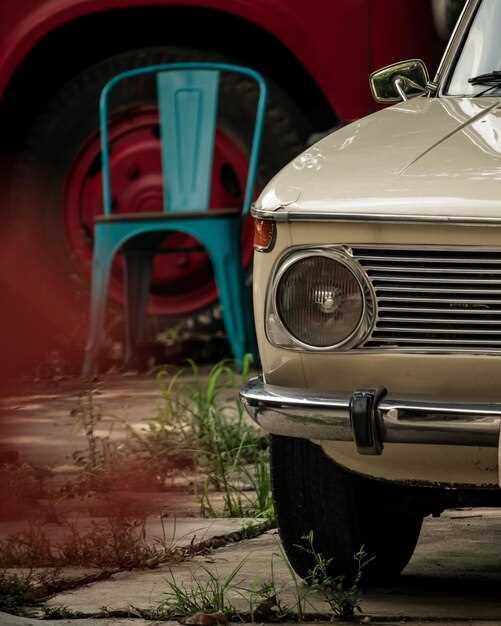
The Datsun 510 has long been regarded as a remarkable embodiment of automotive heritage, transcending its humble origins to become an iconic figure in motorsports and car culture. Introduced in the late 1960s, the 510 was a compact sedan that combined efficiency, reliability, and performance, capturing the hearts of enthusiasts around the globe. Its innovative design and engineering prowess allowed it to punch well above its weight, earning the title of “Giant Killer” in the highly competitive landscape of rally racing and road racing.
Many attributes contribute to the charm of the Datsun 510, from its sleek silhouette to its spirited performance. The model’s lightweight chassis and responsive handling made it a favorite among amateur racers and a formidable competitor against much larger and more powerful vehicles. The car’s success on the track and its accessibility to the average driver solidified its position in automotive history as a testament to the Japanese manufacturer’s commitment to excellence and innovation.
As we delve deeper into the story of the Datsun 510, we will explore its profound impact on the car community, the legacy it has left behind, and how it continues to inspire a new generation of automotive enthusiasts. Join us on this journey as we uncover the multifaceted history and enduring appeal of one of the most beloved cars of its time.
Datsun 510: The Legend of the Giant Killer

The Datsun 510 emerged in the late 1960s and quickly gained a reputation as a formidable competitor in the realm of racing. Renowned for its balanced chassis and lightweight design, the 510 captured the hearts of enthusiasts and racers alike, earning it the moniker “The Giant Killer.”
What set the Datsun 510 apart from its contemporaries was its innovative engineering. Equipped with a robust four-cylinder engine, the car showcased impressive power and handling characteristics, allowing it to outperform many larger and seemingly more powerful competitors on the track. The combination of performance and affordability made the 510 a popular choice for amateur racers and rally enthusiasts.
Throughout the 1970s, the Datsun 510 dominated various racing circuits, including the SCCA and the Trans-Am series. Its competitive edge came not only from its engineering but also from the extensive aftermarket support that encouraged modifications and performance enhancements. Many drivers invested in tuning and upgrading their vehicles, leading to a thriving community centered around this iconic model.
Today, the Datsun 510 is celebrated as a classic car, with a dedicated following that preserves its legacy. Vintage races and car shows often feature this legendary vehicle, highlighting its crucial role in the history of racing. The story of the 510 serves as a testament to how a small, unassuming car can challenge the giants of the automotive world, securing its place in automotive lore.
Performance Features That Made Datsun 510 a Racing Champion

The Datsun 510, a compact sedan produced in the late 1960s and early 1970s, holds a revered place in automotive history as a symbol of performance excellence. Its distinct heritage stems from a blend of innovative engineering, lightweight design, and a commitment to racing success. These characteristics set the Datsun 510 apart from its competitors, establishing it as a formidable presence on the track.
One of the defining features of the Datsun 510 is its balanced chassis, which offers exceptional cornering capabilities. The car’s well-engineered suspension system, which includes independent front suspension and a solid rear axle, provides optimal handling dynamics. This setup allows drivers to navigate twists and turns with confidence, enhancing the 510’s reputation as a nimble and responsive vehicle.
The powertrain of the Datsun 510 further solidifies its status as a racing champion. Equipped with a range of efficient and reliable four-cylinder engines, the 510 delivers impressive power-to-weight ratios. The availability of options such as the L-series engines allowed enthusiasts to tailor their vehicles for both street use and competitive racing, showcasing the versatility of the Datsun brand.
Another crucial aspect of the Datsun 510’s performance is its lightweight construction. The use of advanced materials and a streamlined design minimizes overall weight, enabling better acceleration and braking. The reduction in heft contributes not only to speed but also to fuel efficiency, making it appealing to both racers and everyday drivers.
Furthermore, the Datsun 510’s heritage in motorsports cannot be overlooked. Successful racing campaigns in various championships, including SCCA events, demonstrated the vehicle’s capabilities and instilled a legendary status that continues to attract enthusiasts today. The car’s distinctive look, combined with its proven performance, has solidified its position as a giant killer against more powerful competitors.
In conclusion, the Datsun 510’s blend of a balanced chassis, potent engines, lightweight design, and successful racing history creates a formula for performance that has captivated drivers for decades. Its legacy as a racing champion is not just a product of its time but a lasting testament to Datsun’s commitment to excellence in automotive engineering.
The Impact of Datsun 510 on Grassroots Motorsport
The Datsun 510 has made a profound impact on grassroots motorsport since its introduction in the late 1960s. This compact sedan, revered for its engineering and performance, became a symbol of accessibility and heritage in racing communities around the world.
One of the standout features of the Datsun 510 is its lightweight construction and balanced handling, which provided an excellent platform for amateur racers. This allowed hobbyists to enter the world of motorsport without the need for extensive financial investment or advanced technical knowledge.
The following points highlight the significance of the Datsun 510 in grassroots racing:
- Affordability: The Datsun 510 was priced competitively, making it an attractive option for young drivers and enthusiasts looking to participate in racing.
- Customization: The car’s simple design allowed for easy modifications, enabling grassroots racers to personalize their vehicles to enhance performance and appearance.
- Community: The Datsun 510 fostered a strong sense of community among enthusiasts, creating clubs and camaraderie that have persisted for decades.
- Legacy: Its success in various racing events established the 510 as a legitimate competitor, inspiring subsequent generations of racers to pursue motorsport.
The Datsun 510’s presence at grassroots racing events also encouraged a culture of learning and skill development. Many drivers began their journey in the Datsun 510, gaining valuable experience that would translate into more advanced racing disciplines.
In conclusion, the Datsun 510 is not merely a car; it is a cornerstone of grassroots motorsport heritage. Its legacy continues to influence new generations, ensuring that the spirit of accessible racing lives on through the iconic 510.
Maintaining and Restoring Your Datsun 510 for Modern Racing
The Datsun 510, often revered for its race pedigree and heritage, is a classic that requires dedicated maintenance and restoration for modern racing. To keep this legendary vehicle competitive, you need to focus on several key areas.
First, reassess the engine. Many enthusiasts opt for upgraded components to enhance performance. Consider installing a modern fuel injection system or a turbocharger, which can significantly boost horsepower while maintaining fuel efficiency. Regularly check and replace engine oil, coolant, and other fluids to ensure optimal performance.
The suspension system is another critical aspect. Upgrading to coilovers or performance shocks can improve handling and stability, essential for today’s racing conditions. Additionally, inspect bushings and control arms regularly, as older components may wear out and compromise performance.
Braking systems also warrant attention. Upgrading to larger disc brakes or a multi-piston caliper system will enhance stopping power, which is vital in modern racing scenarios. Ensure that brake lines and pads are frequently checked and replaced as necessary to maintain responsiveness.
Lastly, body integrity cannot be overlooked. Rust can be a significant issue for older Datsun 510s. Regularly inspect for corrosion, especially in critical areas such as wheel wells and undercarriages. Use high-quality paints and rust preventatives during restoration to preserve the vehicle’s heritage while preparing it for the rigors of racing.
By focusing on these areas, you can preserve the Datsun 510’s legacy while adapting it for the challenges of modern motorsports, ensuring it continues to be a giant killer on the racetrack.




